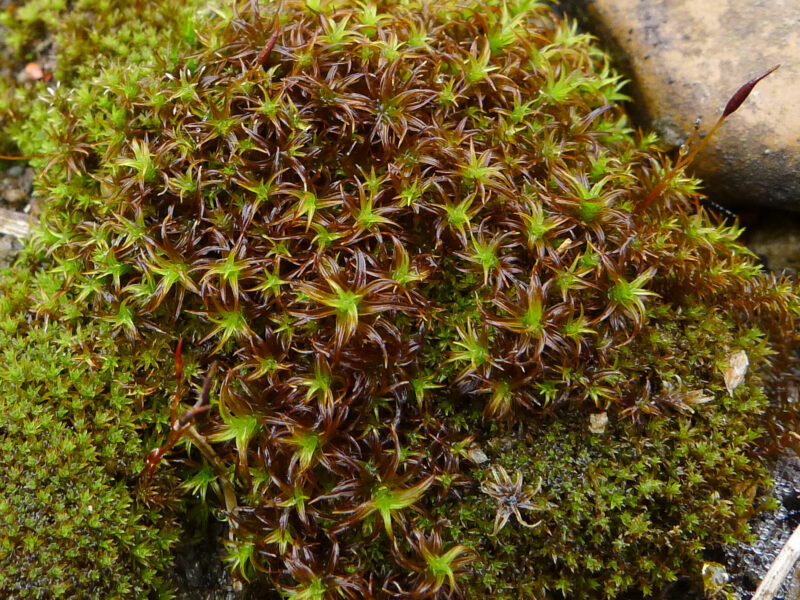Identification notes
D. rigidulus is probably most familiar when it grows on walls, masonry and natural rocks, where it typically forms rather loose-looking dark green to red-green cushions. When plants develop capsules, they help to distinguish it from related long-leaved species that rarely if ever fruit, such as D. insulanus. In many lowland areas it is also common on base-rich soil for example overlying chalk and other limestones where it can be overlooked.
With a bit of practice, you can get your eye in for a couple of subtle but important diagnostic characters that can be seen with a hand-lens. First, the long, tapering leaf draws out into a narrow, almost parallel-sided tip that ends bluntly. There are some good images of this in the gallery below. Then, when plants are dry, the leaves are appressed, incurved or twisted, but never crisped up.
If you are lucky, when you strip off some stem leaves and mount them in water on a slide, you’ll see the characteristic, spherical multicellular axillary leaf gemmae that plants often produce. For a Didymodon, these are very distinctive.
If you need to key out any species of Didymodon, cutting transverse leaf sections and close examination with a compound microscope will tell you much more about the stratosity of the lamina, the recurvature of the margins and the structure of the costa than only looking down on a leaf on a slide. A sharp razorblade is strongly recommended!
Read the Field Guide account
















